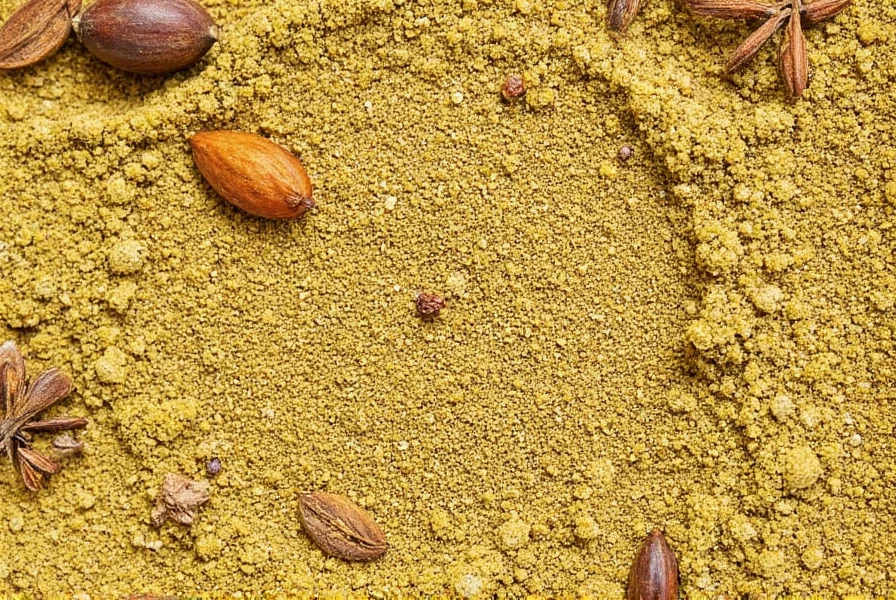Cardamom has a complex flavor profile that combines sweetness, warmth, citrusy brightness, and subtle floral notes. It's often described as a blend of eucalyptus, mint, and cinnamon with a warm, aromatic quality. Unlike more one-dimensional spices, cardamom delivers multiple layers of flavor in a single bite, making it a versatile ingredient in both sweet and savory dishes.
What Is Cardamom?
Cardamom is a spice derived from the seeds of plants in the ginger family. There are two main types: green cardamom and black cardamom. Green cardamom is the more common variety and is often used in both sweet and savory dishes, while black cardamom has a smokier, more intense flavor and is typically used in Indian and South Asian cuisine.
The Taste of Cardamom
At its core, cardamom has a sweet and spicy flavor, with hints of citrus and a slight floral undertone. The aroma is often described as warm, slightly sweet, and almost minty, making it a favorite in both sweet and savory applications.
| Flavor Profile | Cardamom | Cinnamon | Vanilla |
|---|---|---|---|
| Sweetness | High | High | Very high |
| Spiciness | Moderate | Low | None |
| Floral Notes | Present | None | None |
| Earthy Notes | Minimal | Present | None |

The minty or eucalyptus-like quality in cardamom comes from cineole, a compound also found in eucalyptus and tea tree oil. This is part of what gives cardamom its distinctive, refreshing quality that sets it apart from other warm spices. This note is more pronounced in fresh, high-quality cardamom.
Frequently Asked Questions
What does cardamom taste like exactly?
Cardamom has a complex flavor profile that combines sweetness, warmth, and subtle floral notes. It offers a unique blend of citrusy brightness with hints of mint and eucalyptus, balanced by a gentle spiciness. Unlike more one-dimensional spices, cardamom delivers multiple flavor sensations in a single taste experience.
Is cardamom sweet or spicy?
Cardamom is both sweet and spicy, which makes it particularly versatile. It has a natural sweetness that's comparable to cinnamon but with a more complex profile. The spiciness is moderate—not as intense as black pepper or chili—but provides a warming sensation that enhances both sweet and savory dishes.
How does green cardamom differ from black cardamom in taste?
Green cardamom has a sweeter, more floral, and citrusy flavor profile that works well in both sweet and savory applications. Black cardamom, on the other hand, has a much smokier, more camphorous flavor with earthier notes due to the traditional drying process over open flames. Green is preferred for delicate dishes and desserts, while black is better for robust meat dishes and certain curries.
Does cardamom taste like cinnamon?
While both spices share some sweet, warming qualities, they have distinctly different flavor profiles. Cinnamon is primarily sweet and woody with less complexity, while cardamom offers a more intricate blend of sweet, citrusy, floral, and slightly minty notes. They can complement each other well in recipes, but they're not interchangeable in terms of flavor.
Why does cardamom have a minty or eucalyptus-like flavor?
The minty or eucalyptus-like quality in cardamom comes from cineole, a compound also found in eucalyptus and tea tree oil. This is part of what gives cardamom its distinctive, refreshing quality that sets it apart from other warm spices. This note is more pronounced in fresh, high-quality cardamom.
How can I tell if my cardamom is fresh?
Fresh cardamom should have a vibrant green color (for green cardamom), a strong, pleasant aroma when the pod is cracked open, and seeds that are dark brown and slightly sticky. If the pods are faded, the seeds are dry and powdery, or there's little to no aroma, the cardamom has likely lost its potency.
Conclusion
Understanding the taste of cardamom opens up a world of culinary possibilities. Its sweet, spicy, and floral notes make it a versatile ingredient that can enhance everything from baked goods to savory dishes. By focusing on its unique flavor profile, you can fully appreciate this spice in your cooking.










 浙公网安备
33010002000092号
浙公网安备
33010002000092号 浙B2-20120091-4
浙B2-20120091-4